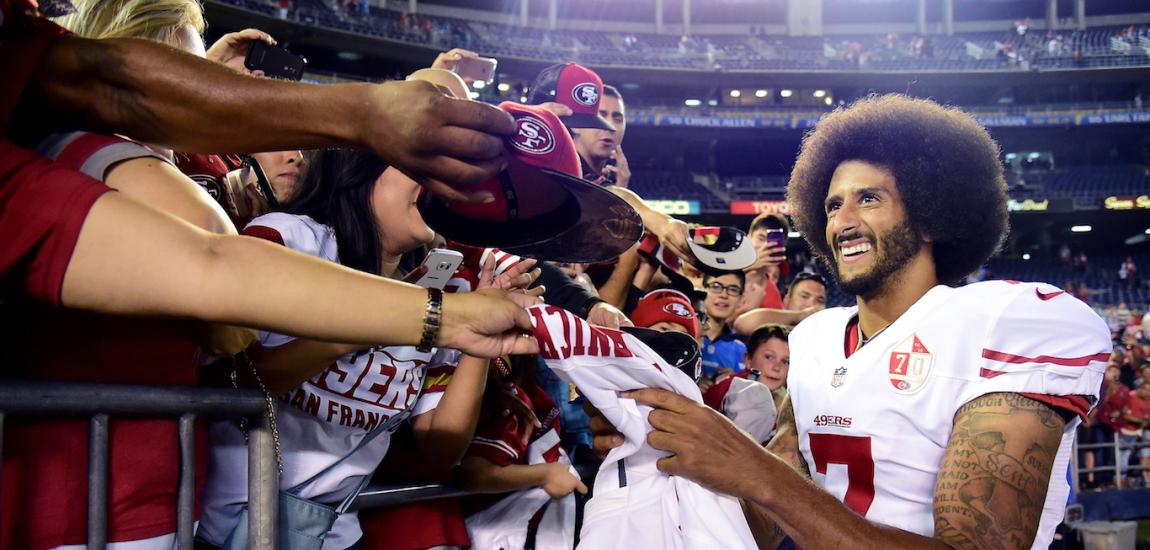
From the 2002 Tuck Rule game to the 1967 Ice Bowl, some of the NFL's classic playoff moments have come amid heapings of snow or simple bitterly cold weather.
When the San Francisco 49ers visit the Green Bay Packers on Sunday for an NFC wild card matchup, it may end up being the coldest playoff game in league history. Weather forecasts have projected lows reaching minus-20 degrees with potential wind chills all the way to minus-50 . The wind chill temperature at the Ice Bowl, which also took place in Green Bay, dropped to -48 degrees at its lowest point.
A report by the Michigan Governor’s Council on Physical Fitness, Health and Sports recommended that at wind chill below minus-50 degrees, all outdoor athletic activity be canceled. But the duel between Aaron Rodgers and Colin Kaepernick and two Super Bowl hopefuls will go on.
The battle of noted quarterbacks may actually be very limited due to strategic changes made for cold-weather games, when teams often run the ball more often. Five-time Pro Bowl running back Frank Gore will likely have his number called frequently, as will rookie counterpart Eddie Lacy of the Packers. The mobility of Kaepernick, who ran for 181 yards in last year’s playoff win against Green Bay, may give him an edge on Super Bowl XLV MVP Rodgers, who is a good runner but also just returning from broken collarbone.
All players will face a heightened possibility of injury in the extreme climate, according to Matthew Matava, the St. Louis Rams' head team physician and president of the NFL Physicians’ Society.
"Those players who only have to play very few times throughout the game or those players who have to do a lot of running up and down the field -- special teams come to mind -- they're the ones I’d be most concerned about,” Matava said. "Because if you have a receiver or running back who’s running up and down the field every play while they’re on offense, they’re going to maintain their flexibility and their body warmth … Whereas if you're, let's say, only coming in on special teams in punt or kickoff, just bursting down the field after having been idle for 15 to 20 minutes or so, and now you’re expecting your muscles to fire at maximum capacity."
Pass-catching players such as wide receivers, tight ends and defensive backs are at increased risk of fracturing bones in their hands. Some players wear surgical gloves under their normal receiving gloves in extreme climates.
"Your reaction time neurologically is decreased in real cold weather,” Matava said.
Even seemingly simple plays like the exchange of the football between center and quarterback could cause injuries because of slower joint movement. Training staffs must also be particularly cautious for players with asthma, Matava said, and will keep inhalers on the sidelines.

The NFL does not issue specific guidelines for cold-weather games beyond standard medical practice, according to Matava. Fortunately, the players are better equipped now to handle the blistering cold than they have been in the past.
"The players nowadays, unlike in the original Ice Bowl, have so much better materials with which to play," Matava said. "They'l be layered with modern technology in terms of the fibers that the clothes are made of."
They also have the benefit of bench heaters and the recognizable space heaters on the sidelines, which get so hot that they are flammable. As the Rams’ physician, Matava spends half of his game-time in the climate-controlled confines of the Edward jones Dome. But for a 2004 Monday Night Football Game in Green Bay, Matava watched from the sidelines as St. Louis played in freezing temperatures.
“I actually had my pants start to smoke one time because of [the space heater],” he said.
Instead of the usual water and Gatorade, players will have the option of drinking chicken broth on the sideline, which serves the dual purpose of hydration and replenishment of body nutrients with salt.
Meanwhile, the Packers can play off their experience in the cold—although not quite this degree of cold—for a psychological advantage.
“Don’t be surprised if you see a player or two on the line not have anything on as far as covering their sleeves go just sort of to show how tough they are compared to the players across the line of scrimmage,” Matava said.
Yet Packers tight end Ryan Taylor told the Milwaukee Journal-Sentinel that he will not partake in that sort of intimidation tactic.
"I don't really subscribe to 'the less clothes I have on the tougher I am,'" Taylor said. "The guys who think they're the toughest guys in the world go out wearing no sleeves. It doesn't make any sense. Being cold doesn't make you tough. It makes you stupid."
Matava did not know of any studies that have been conducted to see if players from warm-weather climates like San Francisco would face a higher risk of injury in the cold than their Packers’ counterparts.
“The only problem you would have in doing a research study like that is that would take many, many games by many, many teams to show any kind of statistical differences,” Matava said, despite acknowledging that the theory could hold some weight. “Then you have to decide how much experience in cold weather really matters. Because let’s say a player plays on the 49ers in this year's game, but he played for the Packers five years.”
The millions of fans watching in comfort in front of their television sets may be most concerned about the players, but fans, coaching staffs and team personnel must endure the bone-chilling temperatures while mostly idle. Even those famously loyal and blizzard-tested Packers' Cheeseheads appeared frightened by the forecasts -- it took until Friday to sell out tickets at Lambeau Field.




